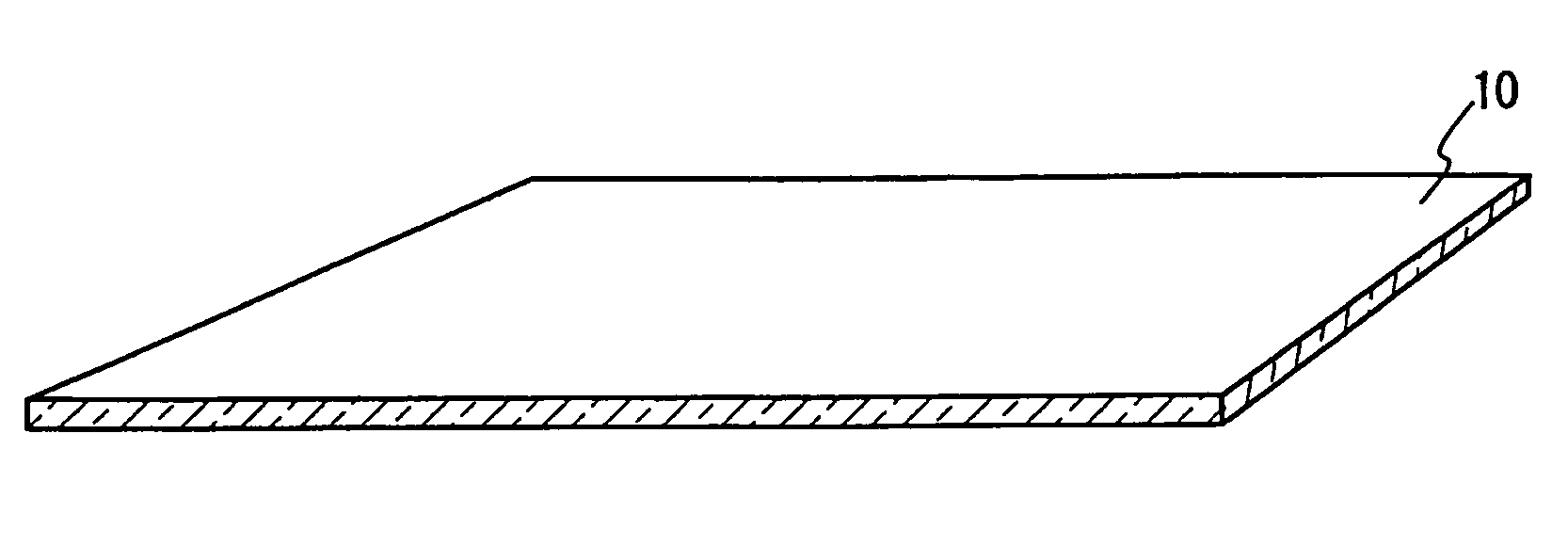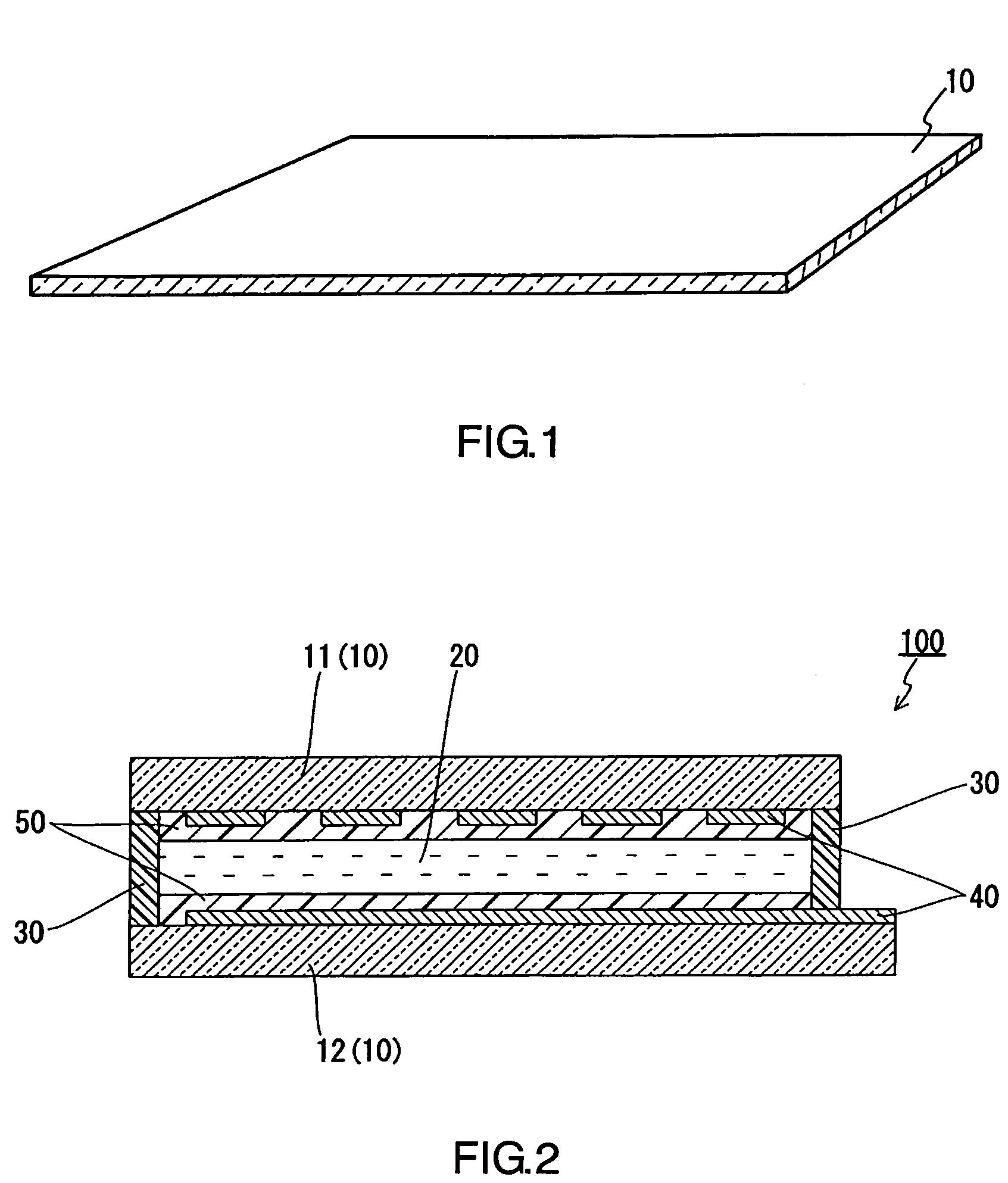Glass composition and process for producing glass composition
a technology of glass composition and composition, applied in the field of glass composition, can solve the problems of difficult fining of glass, limited glass mobility, difficult to achieve good clarity of glass of borosilicate glass composition, etc., and achieves the effects of high yield, easy production of glass substrates for large information display devices, and sufficient fining
- Summary
- Abstract
- Description
- Claims
- Application Information
AI Technical Summary
Benefits of technology
Problems solved by technology
Method used
Image
Examples
examples 1 to 12
Comparative Examples 1 to 3
[0072]In Examples 1 to 12 and Comparative Examples 1 to 3, confirmation was made as to how the inclusion of small amounts of alkali metal oxide and Cl would affect the fining effect.
[0073]Batches of raw glass materials (may be referred to as “batches” hereinafter) shown in Table 1A and Table 1B were prepared. As common raw glass materials, silica, boric anhydride, alumina, basic magnesium carbonate, calcium carbonate, strontium carbonate, and barium carbonate were used. As Cl sources, potassium chloride, calcium chloride, sodium chloride, lithium chloride, and the like were used.
[0074]
TABLE 1AComparativeComparativeEx. 1Ex. 2Ex. 3Ex. 4Ex. 5Ex. 6Example 1Example 2Blend ratioSilicon oxide59.059.059.059.659.458.959.059.9[g / batch]Boric anhydride8.88.88.89.59.49.48.99.5Aluminum17.017.017.015.215.115.017.015.2oxideMagnesium6.05.95.93.83.83.86.03.8carbonateCalcium6.55.95.99.19.08.96.59.1carbonateStrontium2.12.12.12.42.42.42.12.4carbonateBarium————————carbonateLith...
examples 13 to 21
Comparative Examples 4 to 6
[0090]In Examples 13 to 21 and Comparative Examples 4 to 6, suitable composition ranges of the glass composition were confirmed. At the same time, the glass compositions were evaluated comprehensively by considering various factors together, such as Glass transition point, thermal expansion coefficient, and bubble conditions, taking into consideration applications as a glass substrate for information display devices.
[0091]Batches shown in Table 3 were prepared using the same materials used in Examples 1 to 12 and Comparative Examples 1 to 3.
[0092]
TABLE 3Com-Com-parativeparativeComparativeEx. 13Ex. 14Ex. 15Ex. 16Ex. 17Ex. 18Ex. 19Ex. 20Ex. 21Example 4Example 5Example 6BlendSilicon54.9159.2254.3355.2752.7552.9056.7654.1850.0542.7342.2964.18ratiooxide[g / batch]Boric11.259.6811.1810.7711.119.8012.738.446.819.0923.764.21anhydrideAluminum9.6815.1213.7611.4112.0015.4713.8616.2210.8011.667.659.84oxideMagnesium8.683.851.138.749.755.564.532.2916.6229.0010.488.82carbo...
examples 22 to 24
Comparative Example 7
[0101]In Examples 22 to 24 and Comparative Example 7, it was confirmed that the glass compositions may include small amounts of As2O5 or Sb2O3.
[0102]Batches shown in Table 5 were prepared using the same materials used in Examples 1 to 12 and Comparative Examples 1 to 3. Arsenic pentoxide and antimony trioxide were used as the source materials of As2O5 and Sb2O3, respectively.
[0103]
TABLE 5ComparativeExample 22Example 23Example 24Example 7Blend ratioSilicon oxide54.4254.4254.3954.53[g / batch]Boric anhydride8.488.488.488.49Aluminum oxide16.2916.2916.2816.32Magnesium carbonate2.302.302.302.31Calcium carbonate12.9012.9012.9012.92Strontium carbonate1.941.941.941.95Barium carbonate3.473.473.473.48Lithium chloride0.0810.0810.081—Sodium chloride0.0240.0240.024—Potassium chloride0.0500.0500.050—Arsenic pentoxide0.05—0.05—Antimony trioxide—0.050.05—
[0104](Preparation and Analysis of Sample Glass)
[0105]Preparation of sample glasses, quantitative analysis of sample glass comp...
PUM
| Property | Measurement | Unit |
|---|---|---|
| mass % | aaaaa | aaaaa |
| temperature | aaaaa | aaaaa |
| melting temperature | aaaaa | aaaaa |
Abstract
Description
Claims
Application Information
 Login to View More
Login to View More - R&D
- Intellectual Property
- Life Sciences
- Materials
- Tech Scout
- Unparalleled Data Quality
- Higher Quality Content
- 60% Fewer Hallucinations
Browse by: Latest US Patents, China's latest patents, Technical Efficacy Thesaurus, Application Domain, Technology Topic, Popular Technical Reports.
© 2025 PatSnap. All rights reserved.Legal|Privacy policy|Modern Slavery Act Transparency Statement|Sitemap|About US| Contact US: help@patsnap.com


